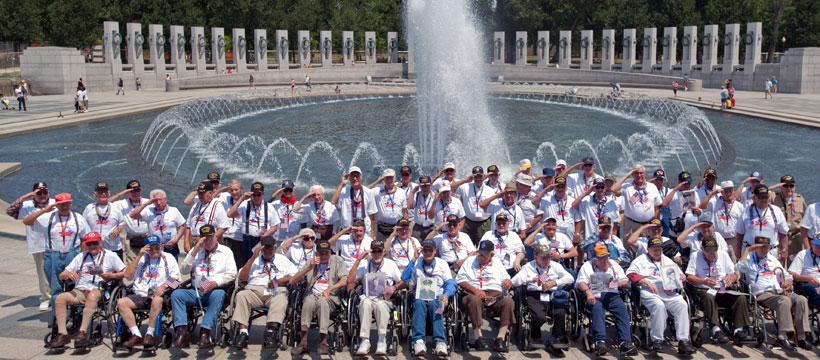Share This
Related Posts
Tags
Virtual Veterans
By Cutright Elizabeth on May 25, 2017 in Technology
With the help of virtual reality, aging veterans unable to travel can get up close and personal with far-flung war memorials.
As the clock strikes 11:11am on Veterans Day, the sun aligns perfectly with the Anthem Veterans Memorial in Anthem Arizona. At the appointed hour, beams of light are funneled through the monument, casting a solar spotlight over The Great Seal of the United States. Surrounded by bricks inscribed with the names of over 750 servicemen, for that one moment the seal glows on the ground, gleaming up from the shadows cast by the shrine’s five marble pillars.
While thousands of visitors make the trek each year to watch the transformation live, for many aging veterans the trip is not an option. Failing health and lack of finances make travel prohibitive for many seniors. Thankfully, advances in virtual reality can now help housebound adults explore the world from the comfort of their armchair.
“They can be feet away from them again, in full glory, and feel like they’re there with them,” says Sarah Hill, the co-founder of Honor Everywhere, a nonprofit organization to helping veterans see the memorials erected in their honor – either in person or via virtual reality.
Losing History
The average age of US soldiers during the Vietnam War was 22, and so many of that war’s former combatants are currently nearing retirement age. In addition, in the last 14 years, Vietnam veterans are dying at a rate of 390 per year. For World War II era veterans the numbers are even more staggering: 500 deaths a day and with the US Department of Veterans Affairs estimating that only 620,000 of the 16 million servicemen and women were still alive in 2016. With an average age of 92, most of the nation’s World War II veterans are too frail to travel. Many will never get the chance to see the monuments first hand, something Hill believes needs to be rectified before it’s too late.
“It’s really sad in a way because we as a nation waited far too long to build the World War II memorial and we’re losing our veterans at a rate of 500 a day nationwide,” laments Hill.
“[Virtual Reality] is a way that they can feel like they were there,” she adds.
“This is something I’ve been meaning to do for a long time,” says a veteran in Hill’s VR film, Honor Everywhere. “I’ll remember it for the rest of my life.
Worth A Thousand Words
Advances in virtual reality technology now allow anyone with a headset and an internet connection to view realistic representations of digital landscapes, both real and imagined. From the pricey Oculus Rift headsets to Google’s simple cardboard version, the VR hardware combines audio playback with a digital display to immerse users in a virtual world. Fervently embraced gamers and tech’s early adopters, today’s VR devices have matured beyond mere entertainment.
For organizations like Honor Everywhere 360, VR technology can be a transformative experience. A sponsor of Honor Flights, which help aging veterans travel to Washington DC to visit the country’s war memorials, Honor Everywhere also sponsors VR presentations to homebound veterans.
Using Stereoscopic 360, 3D video, Honor Everywhere helps frail and infirm veterans see the WWII, Korea and Vietnam Memorials in a way that mirrors being there first hand. For many former soldiers and military personnel, the chance to see the places erected in their honor allows them connect with their past and memorialize their fellow brothers and sisters in arms.
“It makes me sad to see the tombstones,” says one veteran in filmmaker Sarah Hill’s VR film. “I think of all those boys we could be looking at today.”
“They paid the real price,” says another veteran. “They’re the real heroes.”
